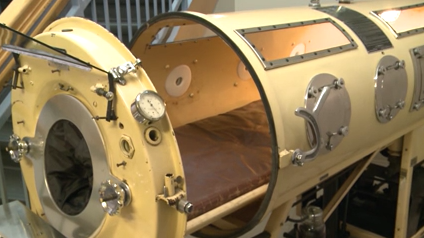Preservation team worked to save a historical iron lung in Lancaster
The Lancaster Medical Heritage Museum announced that they successfully completed the restoration and preservation efforts for the iron lung exhibit.
The museum acquired the iron lung in the 2000s and showed it as a historic symbol of the fight against polio. Over the years, the iron lung began to show signs of its age, wearing and deteriorating. The museum’s preservation team chose to undertake the process to preserve the piece of history.
Dr. Jon Schrock led the restoration efforts. The task required a detailed understanding of the iron lung’s mechanics and every aspect of the exhibit had to be examined. From outside to inside, the team assessed the deterioration and worked to preserve it. They worked to ensure that the iron lung retained its integrity while also complying with the preservation standards.
"We are thrilled to unveil the restored iron lung to the public," said Kim Jovinelli, executive director of the Lancaster Medical Heritage Museum. "This project is timely as Paul Alexander, the last known person living in an iron lung, unfortunately, passed away yesterday, March 13, 2024, at the age of 78. This piece of equipment represents how far we have come and how important medicine is to history."
To see the iron lung in person, visit the Lancaster Medical Heritage Museum at 410 North Lime Street.





